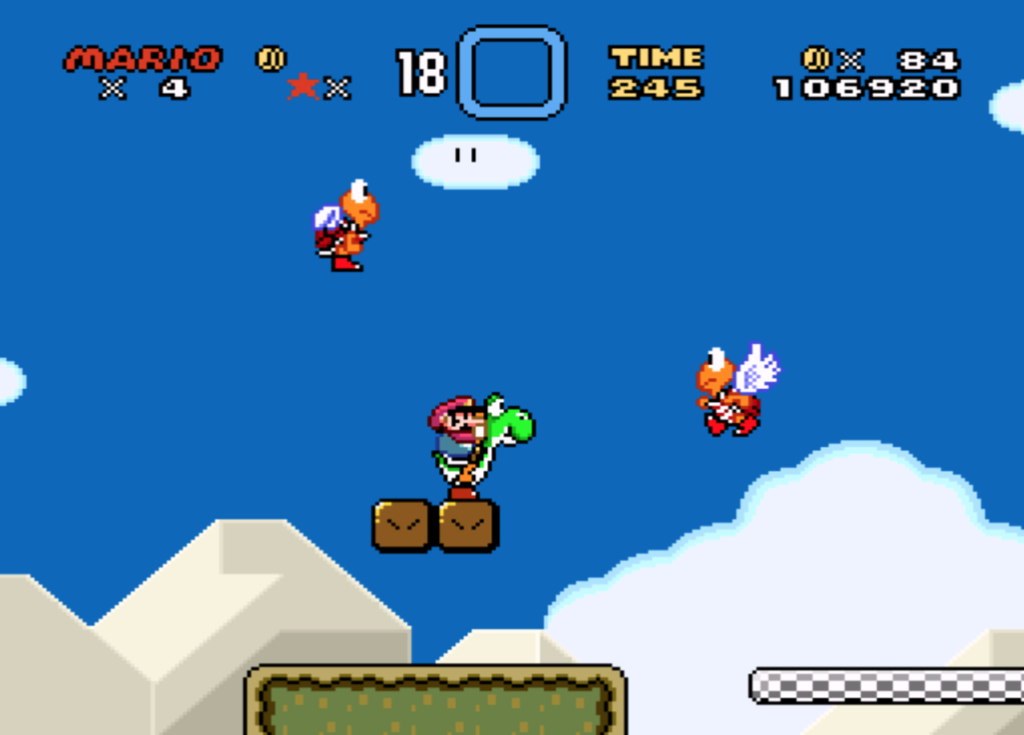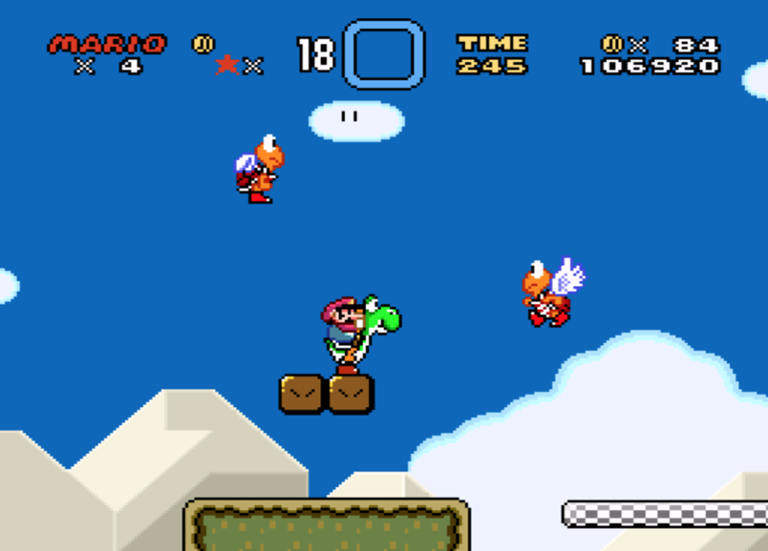 This holiday season, Nintendo will reportedly revive the Super Nintendo (SNES) console in miniaturized form. The SNES made its North American debut in 1991, and subsequently became a global success. An entire generation has fond memories of the platform and its games. That same sense of nostalgia helped make Nintendo’s recent revival of the original NES console a huge hit—although customer excitement turned to anger when the company announced that it would discontinue that device in April. If Nintendo does resurrect the SNES later this year, it may also place the console on the market for a limited time, like the NES. The big question is which games will come bundled with it; classics like “Star Fox” and “Super Mario” seem like solid candidates. The fervor over Nintendo’s greatest hits also highlights an interesting phenomenon in the gaming industry at the moment: even as customers line up to get their hands on hardware that plays thirty-year-old games, there’s rising debate over whether gaming’s most cutting-edge frontier—virtual reality—will ever enjoy mainstream popularity. This dichotomy is also reflective of cost. The mini NES cost $60, well within the price range of many consumers. A VR rig such as Oculus Rift or the HTC Vive, on the other hand, can cost many hundreds—and that’s before you add in the expensive PC required to produce a virtual-reality environment. While VR struggles to break out from its niche, firms such as Apple and Facebook are actively exploring the potential of augmented reality (AR). Last summer, the case for AR enjoyed a significant boost when “Pokémon Go,” which leverages AR technology to insert digital creatures into the player’s real-world environment, became a smash hit on smartphones. That an AR experience is possible on a user’s handheld device is potentially a pathway to huge adoption. Whether or not VR and AR transform into commonplace gaming platforms, however, it’s hard to deny the appeal of retro. The past few years have seen the rise of indie games such as “Shovel Knight” that deliberately harken back to video games’ 16-bit (or even 8-bit) heyday. Such successes show that a side-scroller with pixelated graphics will sell just as well as an immersive VR or AR experience. And that’s good news for tech pros who are interested in pursuing game development as either a sideline or a full-on career: if you want to make a game, it doesn’t have to be the next “Call of Duty.” You just need to create something that offers a compelling playing experience—and sprinkling in a bit of nostalgia can’t hurt, either.
This holiday season, Nintendo will reportedly revive the Super Nintendo (SNES) console in miniaturized form. The SNES made its North American debut in 1991, and subsequently became a global success. An entire generation has fond memories of the platform and its games. That same sense of nostalgia helped make Nintendo’s recent revival of the original NES console a huge hit—although customer excitement turned to anger when the company announced that it would discontinue that device in April. If Nintendo does resurrect the SNES later this year, it may also place the console on the market for a limited time, like the NES. The big question is which games will come bundled with it; classics like “Star Fox” and “Super Mario” seem like solid candidates. The fervor over Nintendo’s greatest hits also highlights an interesting phenomenon in the gaming industry at the moment: even as customers line up to get their hands on hardware that plays thirty-year-old games, there’s rising debate over whether gaming’s most cutting-edge frontier—virtual reality—will ever enjoy mainstream popularity. This dichotomy is also reflective of cost. The mini NES cost $60, well within the price range of many consumers. A VR rig such as Oculus Rift or the HTC Vive, on the other hand, can cost many hundreds—and that’s before you add in the expensive PC required to produce a virtual-reality environment. While VR struggles to break out from its niche, firms such as Apple and Facebook are actively exploring the potential of augmented reality (AR). Last summer, the case for AR enjoyed a significant boost when “Pokémon Go,” which leverages AR technology to insert digital creatures into the player’s real-world environment, became a smash hit on smartphones. That an AR experience is possible on a user’s handheld device is potentially a pathway to huge adoption. Whether or not VR and AR transform into commonplace gaming platforms, however, it’s hard to deny the appeal of retro. The past few years have seen the rise of indie games such as “Shovel Knight” that deliberately harken back to video games’ 16-bit (or even 8-bit) heyday. Such successes show that a side-scroller with pixelated graphics will sell just as well as an immersive VR or AR experience. And that’s good news for tech pros who are interested in pursuing game development as either a sideline or a full-on career: if you want to make a game, it doesn’t have to be the next “Call of Duty.” You just need to create something that offers a compelling playing experience—and sprinkling in a bit of nostalgia can’t hurt, either. Nintendo Shows Power of Retro in Game Design
 This holiday season, Nintendo will reportedly revive the Super Nintendo (SNES) console in miniaturized form. The SNES made its North American debut in 1991, and subsequently became a global success. An entire generation has fond memories of the platform and its games. That same sense of nostalgia helped make Nintendo’s recent revival of the original NES console a huge hit—although customer excitement turned to anger when the company announced that it would discontinue that device in April. If Nintendo does resurrect the SNES later this year, it may also place the console on the market for a limited time, like the NES. The big question is which games will come bundled with it; classics like “Star Fox” and “Super Mario” seem like solid candidates. The fervor over Nintendo’s greatest hits also highlights an interesting phenomenon in the gaming industry at the moment: even as customers line up to get their hands on hardware that plays thirty-year-old games, there’s rising debate over whether gaming’s most cutting-edge frontier—virtual reality—will ever enjoy mainstream popularity. This dichotomy is also reflective of cost. The mini NES cost $60, well within the price range of many consumers. A VR rig such as Oculus Rift or the HTC Vive, on the other hand, can cost many hundreds—and that’s before you add in the expensive PC required to produce a virtual-reality environment. While VR struggles to break out from its niche, firms such as Apple and Facebook are actively exploring the potential of augmented reality (AR). Last summer, the case for AR enjoyed a significant boost when “Pokémon Go,” which leverages AR technology to insert digital creatures into the player’s real-world environment, became a smash hit on smartphones. That an AR experience is possible on a user’s handheld device is potentially a pathway to huge adoption. Whether or not VR and AR transform into commonplace gaming platforms, however, it’s hard to deny the appeal of retro. The past few years have seen the rise of indie games such as “Shovel Knight” that deliberately harken back to video games’ 16-bit (or even 8-bit) heyday. Such successes show that a side-scroller with pixelated graphics will sell just as well as an immersive VR or AR experience. And that’s good news for tech pros who are interested in pursuing game development as either a sideline or a full-on career: if you want to make a game, it doesn’t have to be the next “Call of Duty.” You just need to create something that offers a compelling playing experience—and sprinkling in a bit of nostalgia can’t hurt, either.
This holiday season, Nintendo will reportedly revive the Super Nintendo (SNES) console in miniaturized form. The SNES made its North American debut in 1991, and subsequently became a global success. An entire generation has fond memories of the platform and its games. That same sense of nostalgia helped make Nintendo’s recent revival of the original NES console a huge hit—although customer excitement turned to anger when the company announced that it would discontinue that device in April. If Nintendo does resurrect the SNES later this year, it may also place the console on the market for a limited time, like the NES. The big question is which games will come bundled with it; classics like “Star Fox” and “Super Mario” seem like solid candidates. The fervor over Nintendo’s greatest hits also highlights an interesting phenomenon in the gaming industry at the moment: even as customers line up to get their hands on hardware that plays thirty-year-old games, there’s rising debate over whether gaming’s most cutting-edge frontier—virtual reality—will ever enjoy mainstream popularity. This dichotomy is also reflective of cost. The mini NES cost $60, well within the price range of many consumers. A VR rig such as Oculus Rift or the HTC Vive, on the other hand, can cost many hundreds—and that’s before you add in the expensive PC required to produce a virtual-reality environment. While VR struggles to break out from its niche, firms such as Apple and Facebook are actively exploring the potential of augmented reality (AR). Last summer, the case for AR enjoyed a significant boost when “Pokémon Go,” which leverages AR technology to insert digital creatures into the player’s real-world environment, became a smash hit on smartphones. That an AR experience is possible on a user’s handheld device is potentially a pathway to huge adoption. Whether or not VR and AR transform into commonplace gaming platforms, however, it’s hard to deny the appeal of retro. The past few years have seen the rise of indie games such as “Shovel Knight” that deliberately harken back to video games’ 16-bit (or even 8-bit) heyday. Such successes show that a side-scroller with pixelated graphics will sell just as well as an immersive VR or AR experience. And that’s good news for tech pros who are interested in pursuing game development as either a sideline or a full-on career: if you want to make a game, it doesn’t have to be the next “Call of Duty.” You just need to create something that offers a compelling playing experience—and sprinkling in a bit of nostalgia can’t hurt, either. 


